It doesn’t matter what time of year it is, hoof care should always be a priority for your horse. It’s one of those things that is easy to forget about, but hoof problems are a lot harder to repair than prevent. Add these easy hoof care steps into your routine to prevent any major issues from occurring.
1. Prevent Thrush
Thrush is a fungal infection that is most commonly found in a horses frog that develops when the hoof is in a moist or damp environment. The infection spreads quickly and if left untreated will start to damage the frog and cause sensitivity and pain to the area.
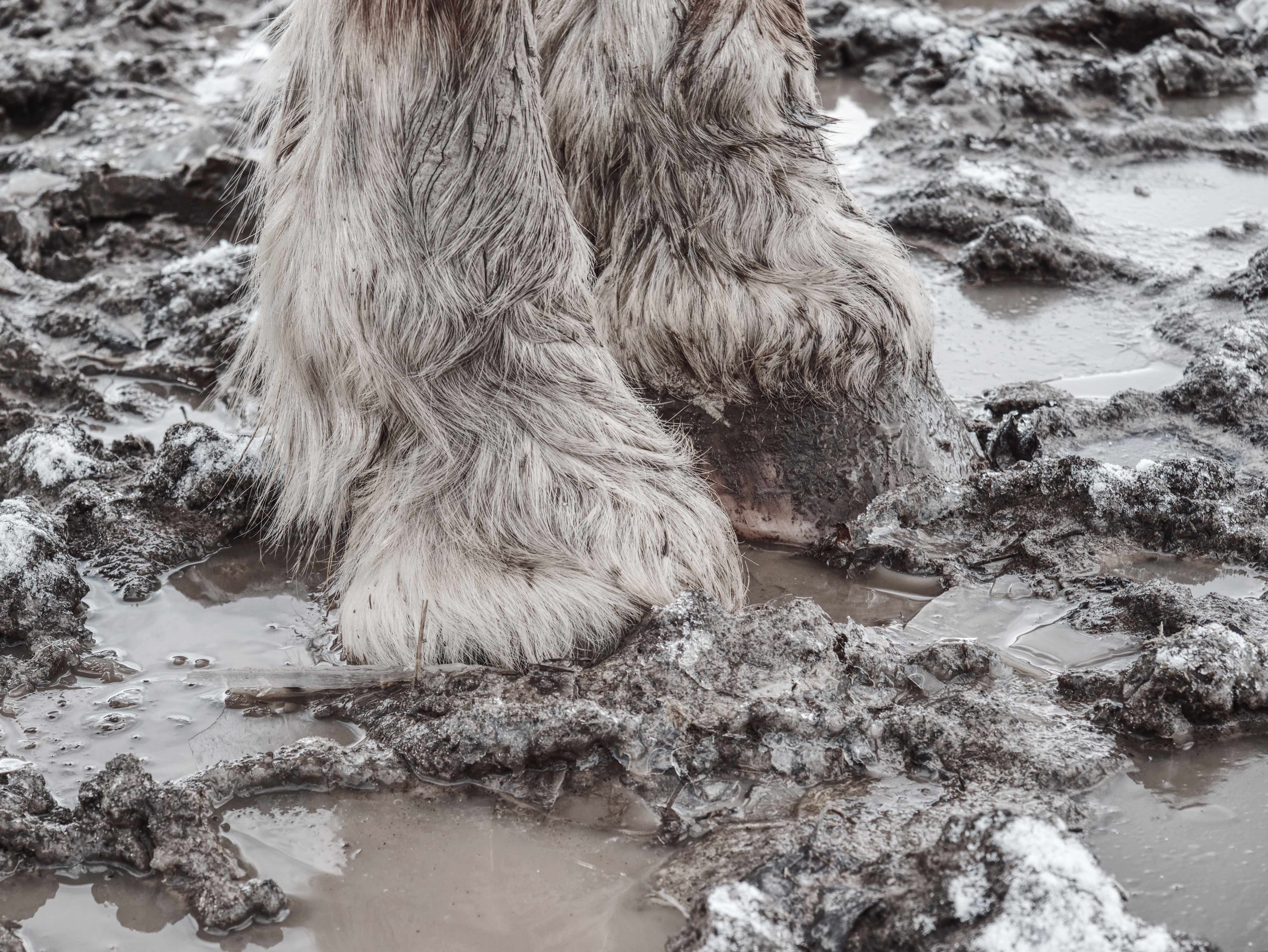
During the rainy and wet season, thrush is very hard to prevent, especially if your horse lives outside.
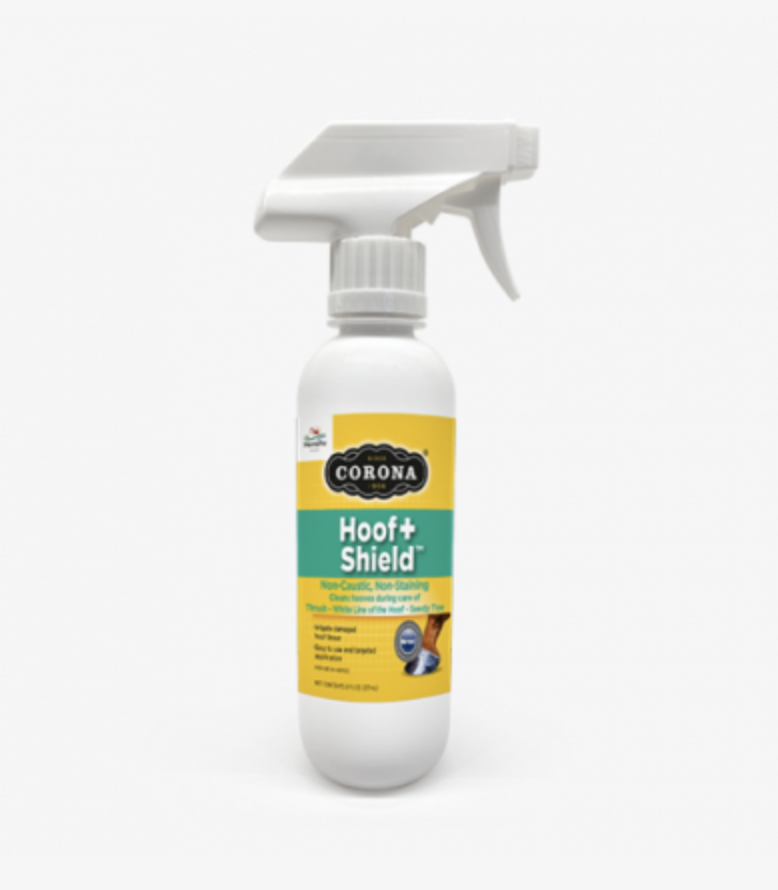
If your horse does live outside year-round, try to prevent water from building up in the pasture with drainage and by filling in any low spots in the ground. The best way to prevent thrush is by using a topical treatment consistently to stop thrush from even forming. Once it starts, it’s very stubborn and hard to completely get rid of. Some thrush treatments must be brushed on and can easily stain barn floors. Try Corona Hoof+Shield which is an easy-to-use spray that won’t stain and creates a shield on the hoof from outside moisture. Thrush can also be caused by your horse standing in a dirty or urine-soaked stall for a long amount of time, so be sure to clean your horse’s stall often.
2. Schedule Your Farrier Regularly
It’s a good idea to have your farrier trim your horse’s feet on a set schedule. Most farriers recommend every four to six weeks but talk to yours to see what they recommend for your horse and their environment.
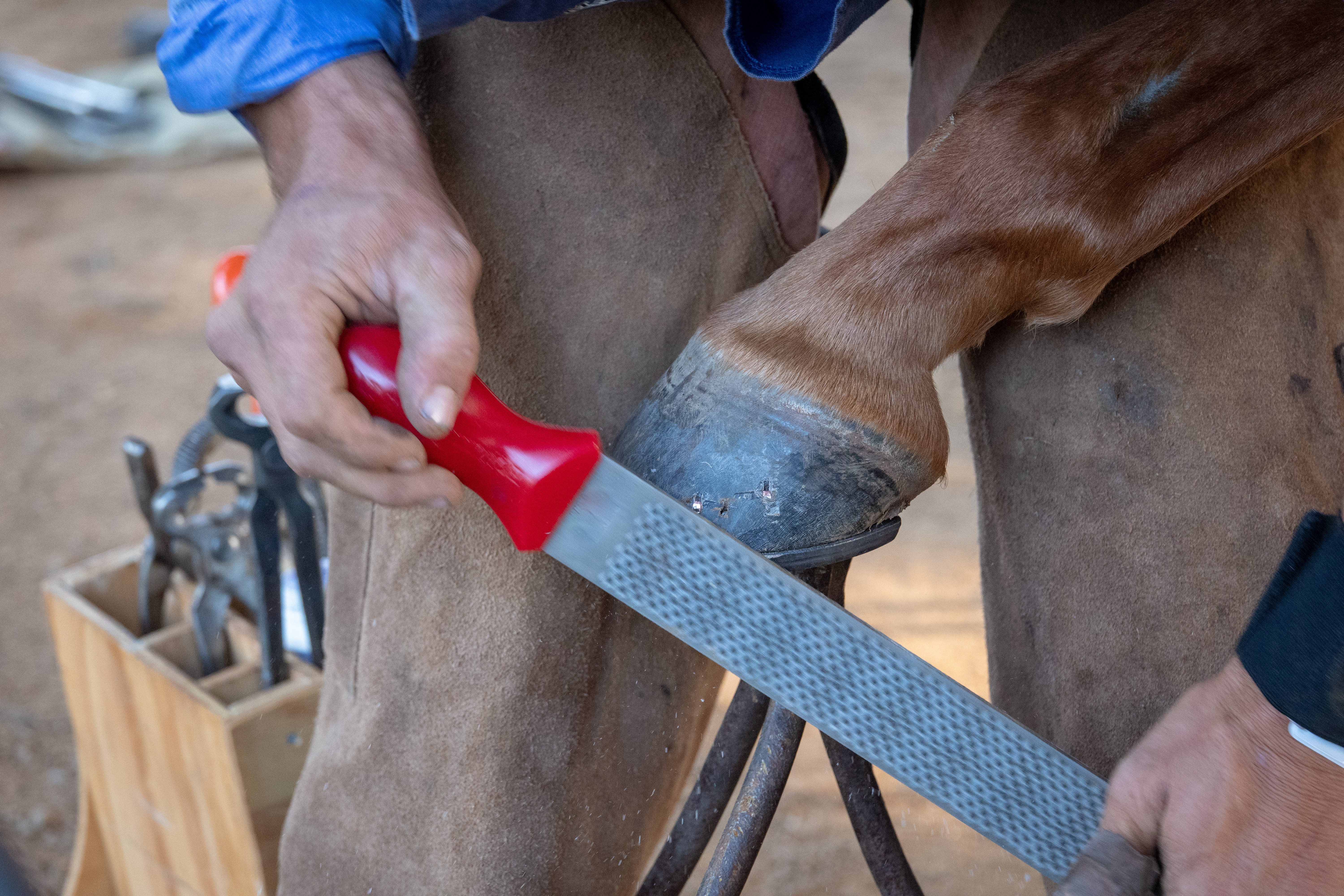
Maintaining a regular schedule will help trimmed hooves remain balanced. If they become overgrown, hooves can become imbalanced and create cracks, wall separations, and other issues. Just because your farrier comes regularly doesn’t mean they will go in and chop all of their toe off. A simple rasp and quick trim will ensure the hoof can grow healthy without any damage occurring.
3. Use a Multi-Use Dressing
To shorten your hoof maintenance routine, use a dressing that prevents and takes care of multiple parts of the hoof. It’s important to look for a product that prevents dry and brittle hooves, encourages hoof growth, and protects the coronary band, heel, sole, and frog.
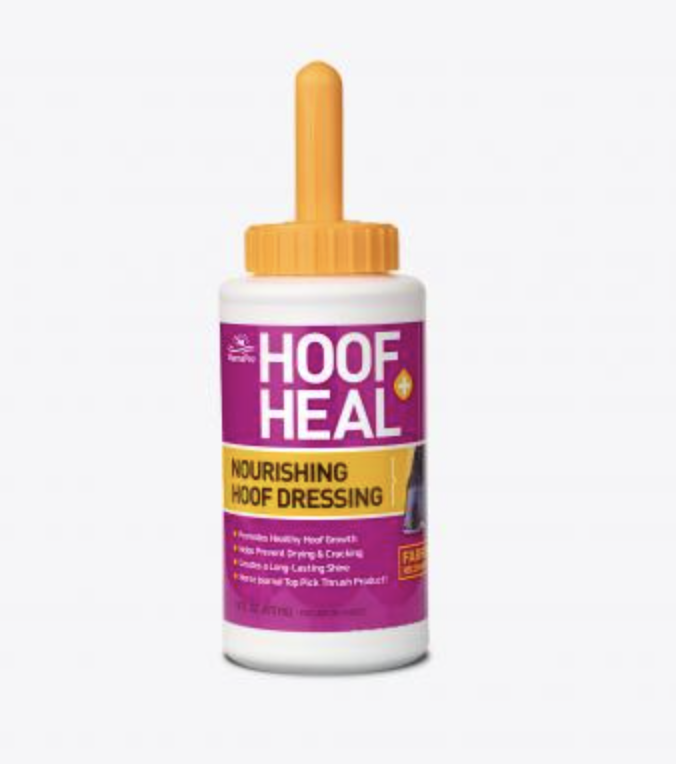
A product that can do all of these things is hard to find, but it really does make your routine easier. Your groom bag won’t be full of multiple bottles that require different applicators, instead just one bottle that you apply and are done. Hoof-Heal Nourishing Hoof Dressing addresses all of the important hoof care necessities and comes with a built-in brush for easy application. All you have to do is apply this dressing to a clean hoof and it will create a flexible barrier that protects all parts of the hoof.
4. Pick Out Their Hooves
This might sound obvious, but some people don’t clean out their horse’s hooves as often as they should. Picking out their feet regularly will remove any dirt, rock, or debris that becomes trapped around the frog. Debris that becomes packed around the frog can cause sensitivity and thrush to build up. Even if your horse is in a dry stall, if they have wet mud or urine packed in their hoof, thrush will still develop. Clean out their hooves after bringing them in from the pasture and before or after riding. This is also a good way to keep an eye on their hoof health. If you aren’t picking their feet out often, odds are you aren’t paying close attention to what the frog and underneath look like. When you are picking their feet out, just do a quick check to make sure everything looks healthy.
5. Feed a Supplement
You might think that if your horse has naturally healthy hooves, you don’t need to feed a supplement. But again, hoof problems are a lot easier to prevent than repair.
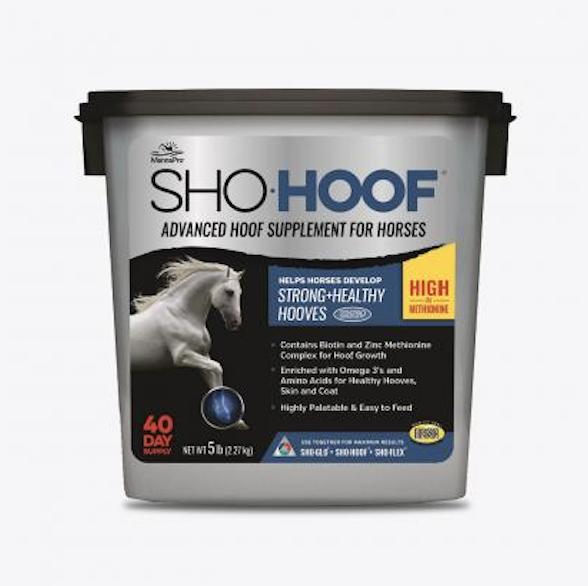
Adding a daily supplement into your routine will help your horse maintain a strong and healthy hoof that will help prevent any major damage from occurring. Some of the best ingredients to look for in a good hoof care supplement are biotin, zinc methionine, lysine, Omega-3 fatty acids, and calcium. The Sho-Hoof Advanced Hoof Supplement contains all of these ingredients, plus a few more, and is super easy to feed. Just add a scoop to the top of your horse’s feed and they won’t even notice the added nutrition you’re feeding them.






